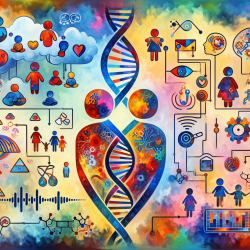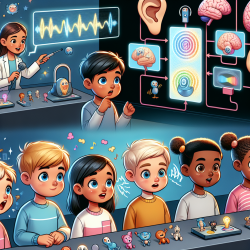Introduction
In the realm of genetic studies, the phenomenon of assortative mating (AM) has long been recognized as a significant factor influencing genetic correlations. The recent study titled A General Approach to Adjusting Genetic Studies for Assortative Mating offers a novel methodology that could reshape how we interpret genetic data, particularly in the context of speech-language pathology and online therapy services for children.
Understanding Assortative Mating
Assortative mating refers to the non-random mating pattern where individuals with similar phenotypes or genotypes are more likely to mate with each other. This can lead to inflated genetic correlations in studies, potentially skewing the interpretation of data related to health and education traits. The study by Bilghese et al. (2023) provides a comprehensive approach to adjusting genetic studies to account for AM, using polygenic indexes (PGIs) to estimate the fraction of genetic variance and correlation driven by AM.
Implications for Practitioners
For practitioners, particularly those involved in online therapy services like TinyEYE, understanding the impact of AM is crucial. By applying the study's methodology, practitioners can better interpret genetic data, leading to more accurate assessments and interventions for children. Here are some actionable insights:
- Enhanced Data Interpretation: Adjust genetic data to reflect what it would be under random mating conditions, leading to more accurate insights.
- Targeted Interventions: Use adjusted genetic correlations to tailor interventions that are more aligned with the child's genetic predispositions.
- Research Opportunities: Encourage further research into the effects of AM on genetic studies, particularly in the context of speech and language development.
Applying the Research
The study's findings suggest that AM can inflate genetic correlation estimates between health traits and education by 14% on average. For practitioners, this means that careful consideration must be given to how genetic data is interpreted and applied in therapeutic settings. The use of PGIs as a tool to adjust for AM-induced biases can lead to more precise and effective therapeutic strategies.
Conclusion
As we continue to advance our understanding of genetics and its implications for therapy, integrating data-driven approaches like those proposed in the study by Bilghese et al. (2023) is essential. By doing so, practitioners can ensure that they are providing the most effective and personalized care for children, ultimately leading to better outcomes.
To read the original research paper, please follow this link: A General Approach to Adjusting Genetic Studies for Assortative Mating.










